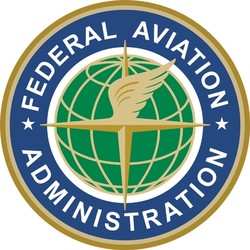Tue, Aug 26, 2014
Meetings Planned With FAA To Develop Advisory Circulars
HAI, along with the Association of Air Medical Services (AAMS) and the Air Medical Operators Association (AMOA), are continuing their work with the FAA to ensure that helicopter air ambulance operators have the information they need to comply with the helicopter safety rule issued earlier this year — often known as the HEMS rule.

The three associations are planning meetings with the agency in the coming weeks to develop advisory circulars and other guidance to help operators comply with the multi-year roll-out of the new rule.
Earlier this summer, as a result of pointed input from the three associations, the FAA issued a direct final rule and three technical corrections to the safety rule, which itself was issued in late February. The changes reflect industry’s input, and enhance safety.
The direct final rule modifies 14 CFR 135.611, a new section that was added as part of the helicopter safety rule, to allow helicopter air ambulance (HAA) pilots to “assess the weather at a departure point where current weather observations are not available and to depart if the pilot's observed ceiling and visibility is greater than certain weather minimums. This change to the current regulation will permit helicopter air ambulance flights to enter the National Airspace System under instrument flight rules (IFR) when visibilities and ceilings are below visual flight rules (VFR) based on pilot weather observations, thus increasing the safety of the flight.”
Had the FAA not taken this action, pilots would have been unable to depart IFR from landing sites without weather reporting — which would likely include most of the incident sites they would be departing from — until VFR conditions existed. It allows HAA pilots operating in low visibility to take full advantage of air traffic separation services.
In addition, the FAA made technical corrections the sections 91.155, 135.609, and 135.621.
- The change to 91.155 removes duplicative text and clarifies a table included in the section, but does not change the intent of the Final Rule.
- The change to 135.609 clarifies that weather minimums outlined in the part only apply to VFR operations.
- The change to 135.621 eases the burden for operators with regard to required briefings for medical non-flight personnel.
HAI, AAMS, and AMOA continue to have regular contact with the FAA as the agency develops the guidance necessary for HAA operators to comply with the new rules and enhance safe air ambulance operations.
More News
Its Offerings Are Lighter, Cleaner, and Now Pushing Past 1,000nm on SAF Jet Fuel DeltaHawk’s diesel-powered aircraft lineup has seen incredible upgrades over the last few yea>[...]
The Airplane Experienced A Total Loss Of Engine Power On December 3, 2025, about 1600 central standard time, a Mooney Aircraft Corp. M20K, N57229, was substantially damaged when it>[...]
Make Sure You NEVER Miss A New Story From Aero-News Network Do you ever feel like you never see posts from a certain person or page on Facebook or Instagram? Here’s how you c>[...]
Aero Linx: European Society of Aerospace Medicine (ESAM) As a pan-European, independent forum, it works to promote the safety and health of all persons involved in aviation and spa>[...]
“We are excited to see Wisk achieve this milestone, and I’m so proud of the team that made it possible. The team at Wisk has built advanced technologies across flight c>[...]
 Aero-TV: DeltaHawks Diesel Power Steps Into the Spotlight
Aero-TV: DeltaHawks Diesel Power Steps Into the Spotlight NTSB Prelim: Mooney Aircraft Corp. M20K
NTSB Prelim: Mooney Aircraft Corp. M20K ANN FAQ: Turn On Post Notifications
ANN FAQ: Turn On Post Notifications ANN's Daily Aero-Linx (12.20.25)
ANN's Daily Aero-Linx (12.20.25) Aero-News: Quote of the Day (12.20.25)
Aero-News: Quote of the Day (12.20.25)



